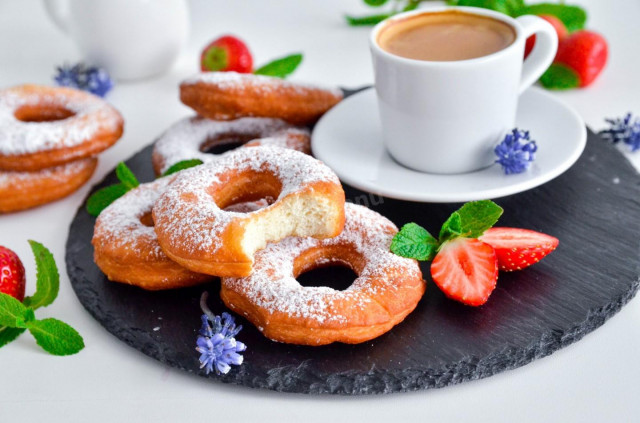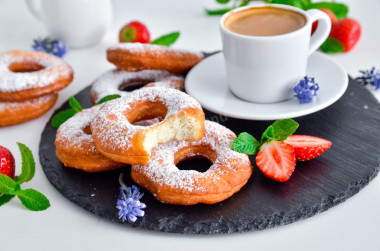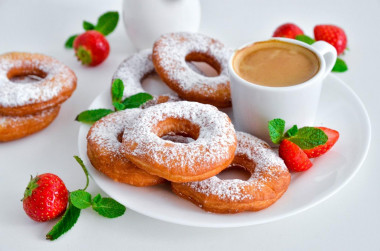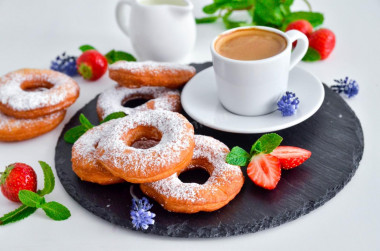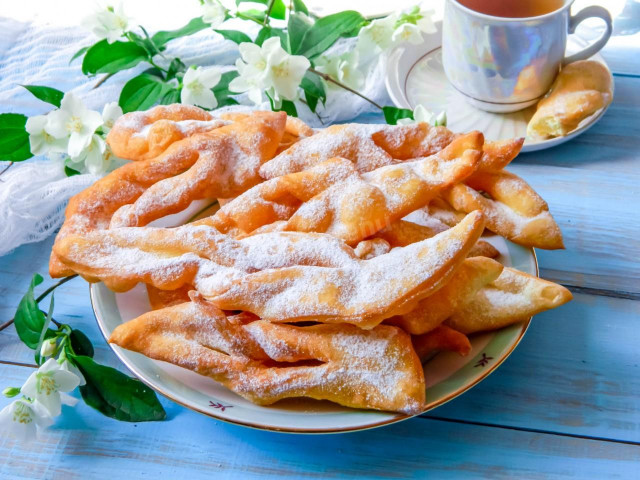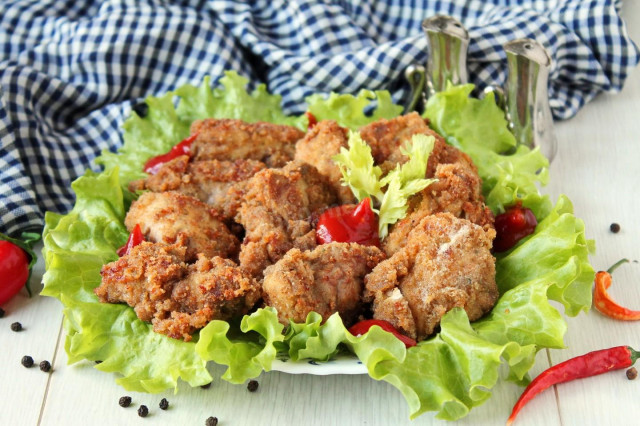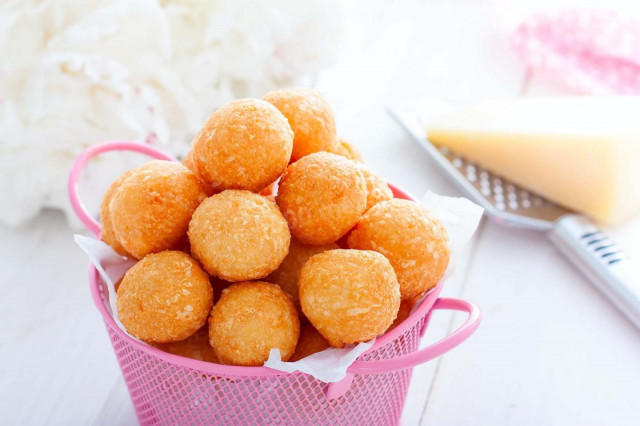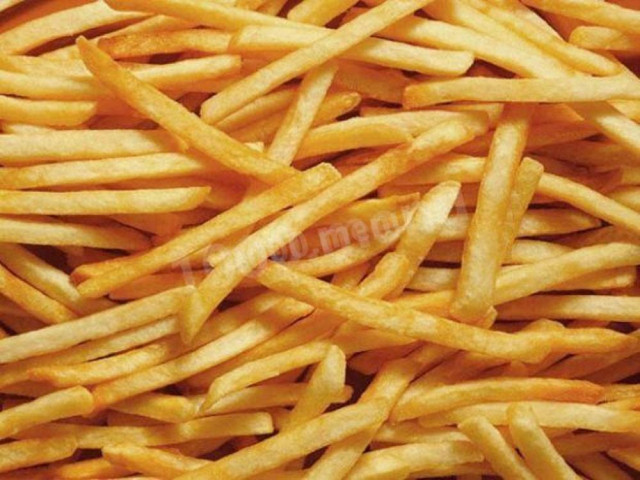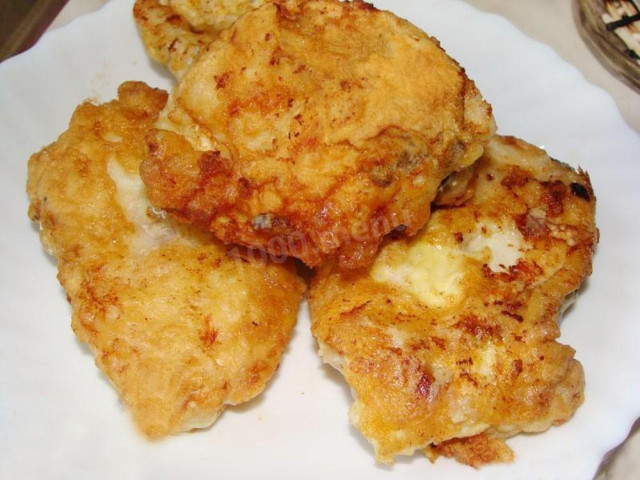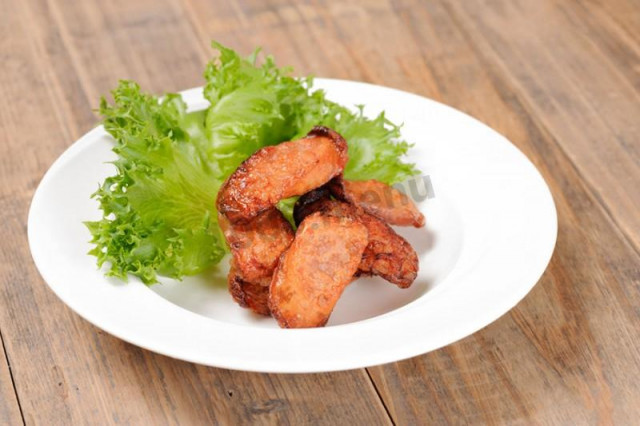Composition / ingredients
Step-by-step cooking
Step 1:
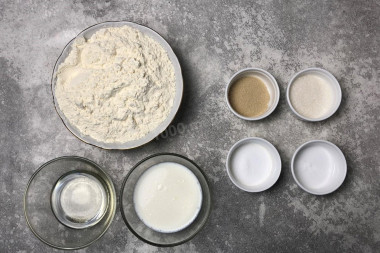
How to make yeast donuts? Prepare the products. Instead of milk, you can take water, then you will get a lean version. Or Use a mixture of water and milk in equal volumes. Yeast in this recipe uses fast-acting, pay attention to this. They are added directly to the flour, without prior activation in a warm liquid. Be sure to read the instructions on the packaging of your yeast!
Step 2:
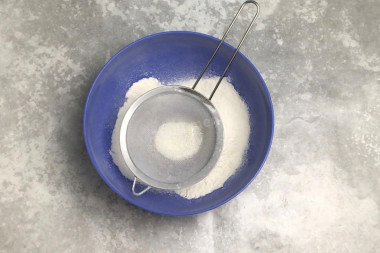
Take a large bowl and sift flour into it. It is important to do this in order to saturate the flour with oxygen. Then the baking will turn out to be airy and will rise well when baking.
Step 3:
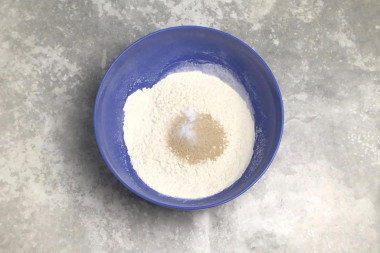
Pour sugar, yeast, salt and vanilla into the flour. If you are using non-fast-acting yeast, then do not add them now, do it in the next step. Mix the dry ingredients.
Step 4:
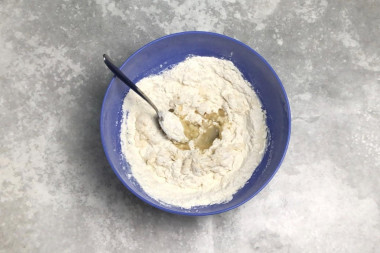
Heat milk (or water, or a mixture of water and milk) to a warm, but not hot state. It should become pleasantly warm to the touch. Pour the milk into the flour. Then pour in the vegetable oil. If you have non-fast-acting yeast, then put them in warm milk and wait a little until a foam "cap" forms on the surface. And only then pour the milk with yeast into the flour.
Step 5:
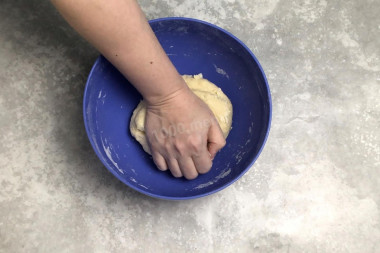
Knead the dough, first with a spoon, then with your hands. If the dough is too steep, then add a little more warm milk, if liquid — flour. The dough should become soft, smooth and absolutely not sticky. Flour and liquid may take you more or less than in the composition.
Step 6:
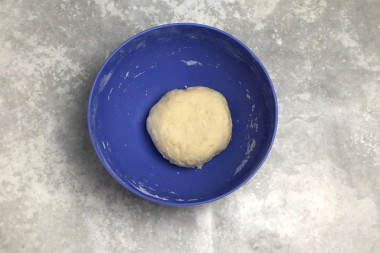
Assemble the dough into a ball. Cover the bowl with a lid, towel or cling film. Remove to a warm place to rise for an hour and a half. I put it in a cold oven, there are no drafts.
Step 7:
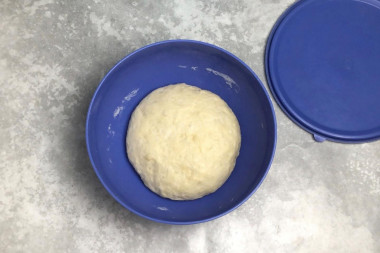
The dough will double during this time.
Step 8:
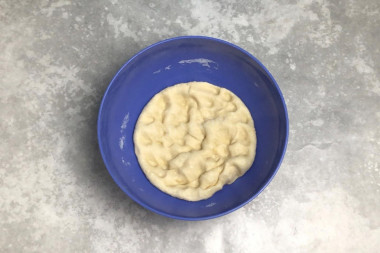
Remember it — remember with your fingers, expelling excess air. And send them up again, but for half an hour.
Step 9:
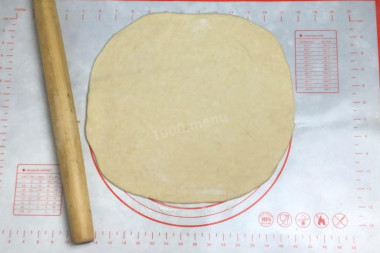
Put the finished dough on a floured work surface. Roll out into a layer about 1.5 cm thick . Don't make it thin, donuts will turn out "skinny". I made a little mistake, my first batch came out like this. It didn't affect the taste, but thick donuts are prettier.
Step 10:
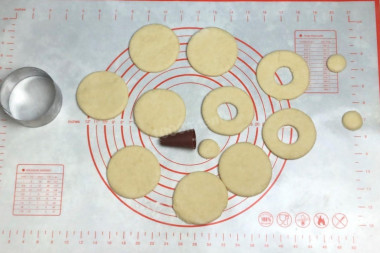
Cut the dough into circles with a round notch or a glass. Cut out a small circle in the middle. I used a nozzle for a pastry bag, you can take the lid from a plastic bottle. Don't throw away the trimmings — blind them and roll them out again. I fried the circles from the middle separately.
Step 11:
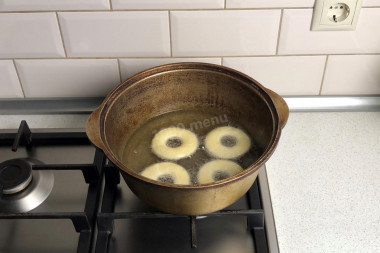
Take a suitable deep-frying dish. I use a cauldron, it is not very beautiful, but reliable — it keeps the heat well. Pour oil into it. There should be a lot of oil so that the donuts are fried without touching the bottom. Heat the oil over high heat. Determine the readiness of the deep fryer with a wooden stick — if bubbles have gathered around it, then you can start the frying process.
Step 12:
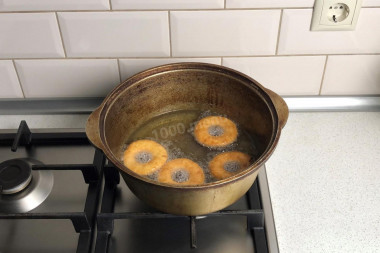
Lower the donuts in batches of several pieces. Note that they will swell when baking — do not throw too much. Fry them over low heat until golden brown on each side. It is convenient to flip donuts with two forks. Don't make the fire too strong — the donuts won't have time to cook inside.
Step 13:
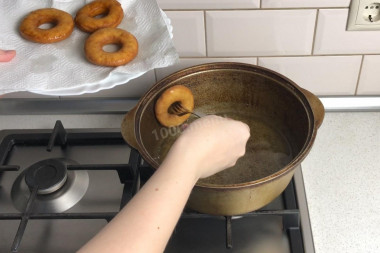
Put the finished donuts on a plate with a paper towel so that it absorbs excess fat. When serving, sprinkle them with powdered sugar. Enjoy your meal!
Dry yeast can be replaced with fresh pressed yeast, based on the proportion of 1:3. That is, for 1 gram of dry yeast required by the recipe, you need to take 3 grams of fresh.
Be prepared for the fact that you may need more or less flour than indicated in the recipe. Focus not on the amount of flour, but on the desired consistency of the dough. To avoid mistakes, read about flour and its properties!
Use oil with a high smoking temperature for frying! Any oils are useful only until a certain temperature is reached - the point of smoking, at which the oil begins to burn and toxic substances, including carcinogens, are formed in it.
Unrefined oils, with rare exceptions, have a low smoking point. There are a lot of unfiltered organic particles in them, which quickly begin to burn.
Refined oils are more resistant to heating, and their smoking point is higher. If you are going to cook food in the oven, on a frying pan or grill, make sure that you use oil with a high smoking point. The most common of the oils with a high smoking point: refined varieties of sunflower, olive and grape.
Caloric content of the products possible in the composition of the dish
- Whole cow's milk - 68 kcal/100g
- Milk 3.5% fat content - 64 kcal/100g
- Milk 3.2% fat content - 60 kcal/100g
- Milk 1.5% fat content - 47 kcal/100g
- Concentrated milk 7.5% fat content - 140 kcal/100g
- Milk 2.5% fat content - 54 kcal/100g
- Whole durum wheat flour fortified - 333 kcal/100g
- Whole durum wheat flour, universal - 364 kcal/100g
- Flour krupchatka - 348 kcal/100g
- Flour - 325 kcal/100g
- Granulated sugar - 398 kcal/100g
- Sugar - 398 kcal/100g
- Vegetable oil - 873 kcal/100g
- Salt - 0 kcal/100g
- Vanillin - 288 kcal/100g
- Powdered sugar - 374 kcal/100g
- Dry yeast - 410 kcal/100g

